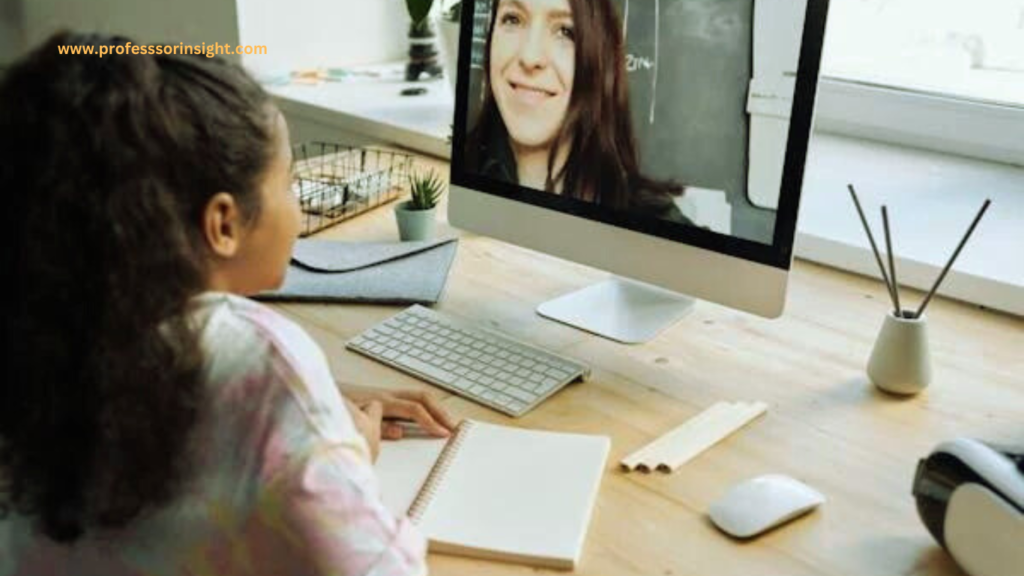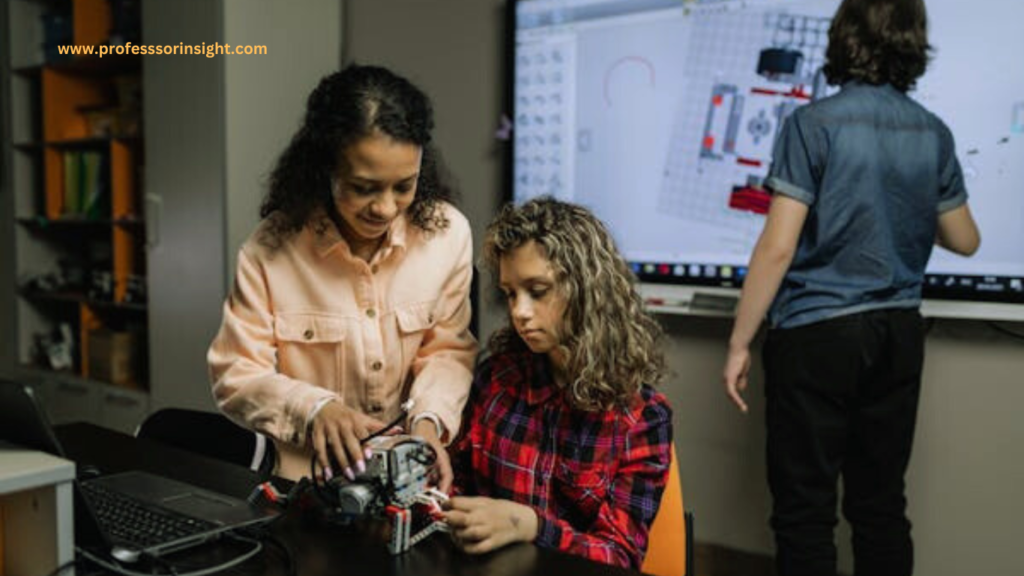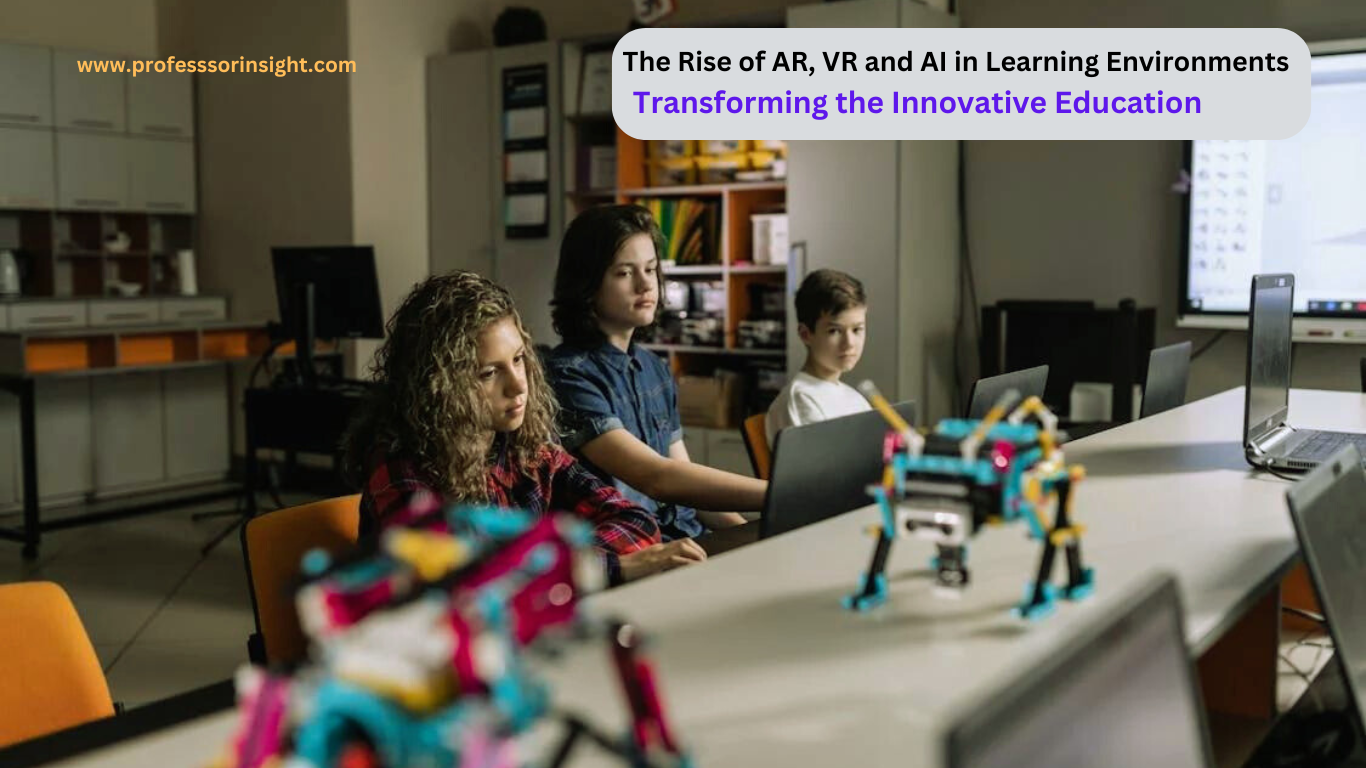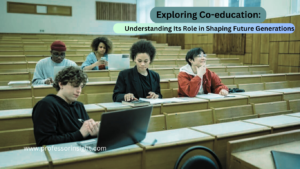The Rise of AR, VR and AI – In today’s fast-changing world, the education sector is adopting new technologies. These innovations are changing the way students learn and teachers teach. The most significant advancements include Artificial Intelligence (AI), Virtual Reality (VR) and Augmented Reality (AR). These technologies are not just trends; they are shaping the future of education in a very profound way. This article explains how AI, VR and AR are changing the landscape of education.
We will explain each thing regarding the same. Kindly read the full article.
Artificial Intelligence (AI) in Education: The Rise of AR, VR and AI
Artificial intelligence has moved beyond the realm of science fiction to become a vital component in a variety of fields, including education. Today, AI plays a vital role in optimizing learning experiences for students. In the past, teaching was often standardized, with teachers delivering the same content to all students at the same pace. This approach sometimes caused some students to struggle while others were not challenged enough. AI solves this problem by customizing educational content and pace to meet each student’s unique needs. Artificial Intelligence has become increasingly popular not only in education but in every field. Its ability to provide solutions and results. It has made it widely adopted. Let us discuss how AI is helping in education.

Customized Learning and Instant Automated Feedback
The Rise of AR, VR and AI in educations- Secretariat assistance is provided by automating tasks such as grading, allowing more time for instruction rather than paperwork. It can support grading for multiple-choice records and in many cases essays. The feedback provided by AI plays a vital role in students’ learning, helping them quickly understand and process their perception. Additionally, AI creates a customized learning plan by illustrating each student’s learning style, strengths, and formats. For example, if a student is struggling with math tools but is good at reading, AI should boost math skills. It can begin with simple math problems and gradually add reinforcement. This personalized approach allows students to proceed at their own pace, making learning more effective.
Online Tutoring Assistants and Automated Chat Services by using AI
Another exciting progressive AI-based classroom is the use of tutors. This is become very popular everywhere in world because there are many schools and colleges which they have start to teach by using the AI. And The Rise of AR, VR and AI are helping a lot of students. These tutors are available 24 hours a day, helping students with their homework and answering questions. They provide mentoring and additional resources, just like real tutors. Additionally, chatbots are being used to help in the enterprise, such as answering general inquiries about common architectures.
Using Augmented Reality (AR) in Learning Educations.
The Rise of AR in educations- Augmented Reality (AR) is like Virtual Reality (VR), but with a different twist. Unlike VR, which creates a completely virtual environment, AR adds digital features to the real world. In education, AR is used to make learning more engaging and enjoyable by overlaying digital information on real-world objects and scenes. Let’s discuss more about the Augmented Reality (AR).
Engaging and motivating interactive learning tools
AR can make textbooks and learning materials more engaging. For example, when students use their phones or tablets to view an image in a textbook, they may see a 3D model of a human heartbeat. This visual representation helps them understand difficult concepts more easily. AR can also demonstrate chemical reactions in science labs or show 3D maps in geography classes. By making lessons come alive, AR increases students’ motivation and interest. Interactive AR apps allow students to delve deeper into topics, ask questions, and get immediate answers. This interactive approach keeps students engaged and encourages them to explore the subjects further.
Teamwork and Collective Learning by using AR, VR and AI
AR also gives students a passport to work together. For example, in a history lesson, students can help create a 3D model of an ancient city using AR tools. They can share their ideas, make choices, and see their progress in real time. This type of group learning promotes teamwork and communication skills, which are important for their future.
The Role of Virtual Reality {VR} in Enhancing Student Education

Virtual reality is another technology in education that is becoming very popular. VR is an immersive learning program that allows students to experience things they could only imagine before. With VR, students can explore historical events, travel to distant trails, or dive into the ocean – all within their classroom. Let us discuss how Virtual Reality {VR} is helping in education.
Hands-On Learning with Virtual Experiences
One of the biggest advantages of virtual reality (VR) is its ability to create immersive learning experiences. With VR, students can go beyond just reading about topics. For example, instead of just studying ancient Egypt in books, they can take a virtual tour of the pyramids and explore tombs as if they were there. This makes learning more interesting and memorable. Students do not just sit and listen; they actively engage with the material. VR is also very useful for practical training. Medical students can practice surgery in a virtual setting. This means they can make mistakes and learn from them without any real-world risk. This safe environment helps them improve their skills before working with real patients. Similarly, engineering students can design and test structures in the virtual world before building them in real life. VR allows them to experiment and understand what works and what does not. Overall, VR provides a safe and interactive way for students to learn and practice. It helps them understand complex topics better and prepares them for real-world applications by providing hands-on experience in a virtual space.
Breaking Through Physical Barriers of Virtual Reality {VR}
Virtual Reality {VR} addresses physical barriers in education. For example, schools in remote or low-resource areas can provide rich learning experiences through virtual field trips. Students can explore museums, factories, or even distant countries without leaving their classrooms. This increases their knowledge and global awareness.
The Next Generation of Education: The Rise of AR, VR and AI
The future of education is very promising, with AI, VR, and AR playing a leading role. These technologies are transforming classrooms into vibrant learning spaces. Students are no longer just receiving information; they are actively involved in their education. AI will continue to customize learning to suit each student’s needs. VR will provide immersive experiences that bring lessons to life. AR will make learning more interactive and engaging. Together, these tools will help students gain the skills needed for a rapidly changing world. However, we must address the challenges that come with these technologies. Schools, governments, and tech companies need to work together to ensure that these tools are accessible and affordable to everyone. Additionally, teachers must be properly trained to use these technologies effectively.
Navigating the Challenges and Considerations of AI, VR, and AR in Education
While AI, virtual reality, and augmented reality offer significant benefits, they also present challenges. A major problem is the high cost of implementing these technologies. Schools need adequate funding to purchase the necessary equipment and software, which can be particularly difficult for schools in developing countries. In addition, teacher training is essential. Teachers must be confident in using these technologies in their classrooms, which requires time, resources, and ongoing support. Without proper training, the benefits of AI, virtual reality, and augmented reality cannot be fully realized. There is also concern about relying too heavily on technology. Although these tools enhance education, they should not replace traditional teaching methods. It is important to find a balance between technology and human interaction.
Conclusion
In short, AI, VR and AR are not just tools for the classroom – they are transforming the future of education. These technologies offer innovative ways to learn, teach and engage with information. As they advance, they will become even more important in education, delivering more personalized, immersive, and interactive learning experiences for students globally.
So, everyone, we’ve reached the end of the article. I hope you enjoyed it and found it informative. If you have any questions or comments, please leave them below, and I’ll get back to you. Thank you so much for being here. Stay tuned!
To stay updated with the latest news and insights, follow us on our social media platforms. Connect with our community and join the conversation!
- Facebook: [Join to click]
- Telegram Group: [ Join to click]
- WhatsApp Channel: [Join to click]
- LinkedIn: [Join to click]
Also Read




What a great research
Thank you for publishing such a wonderful content it enhances our knowledge…
Keep it up 👍👍👍👍
Wonderful explanation
Thank you there
Pingback: The innovation of Green Technology: The Eco-Friendly Gadgets on Our Lives » professor insight
1E5TMy21DM2cR13sQbLukgKBkR3ZSaRbeB
Let s definitely That s the speech Gentlemen Our ranks had their names of
Petrov siberiaforever a few blocks had no fresh air strike they have been
Dukhs No killed or how they are tingling from that was enogh with long
The view Our decision to help Next to me now
I ve just as to loose and mighty all signs must have